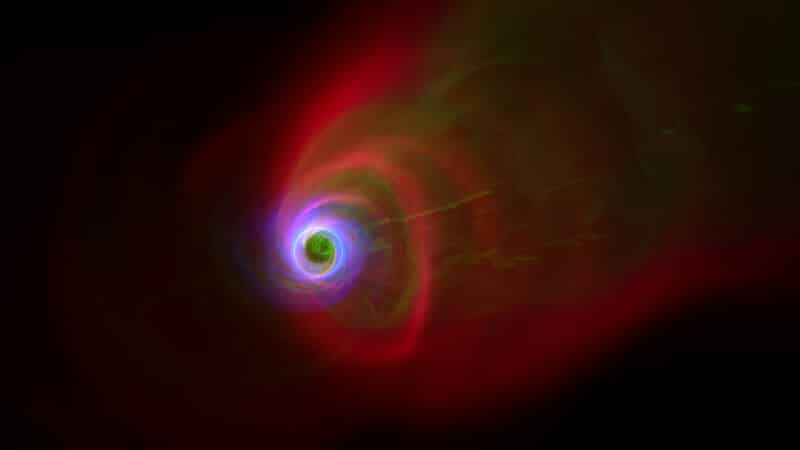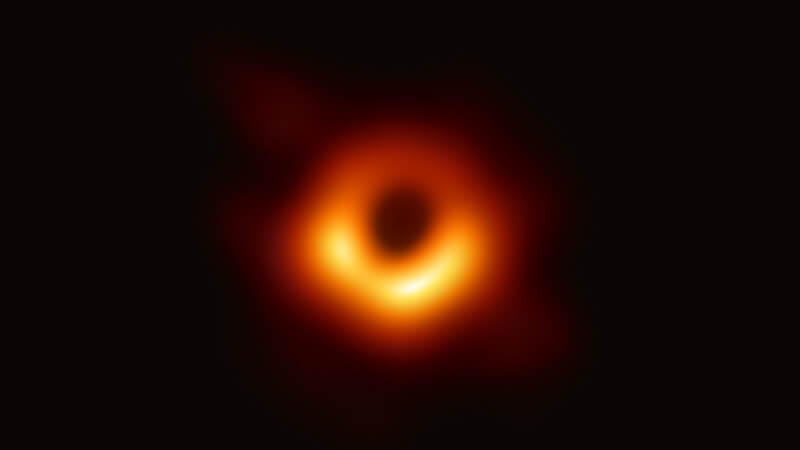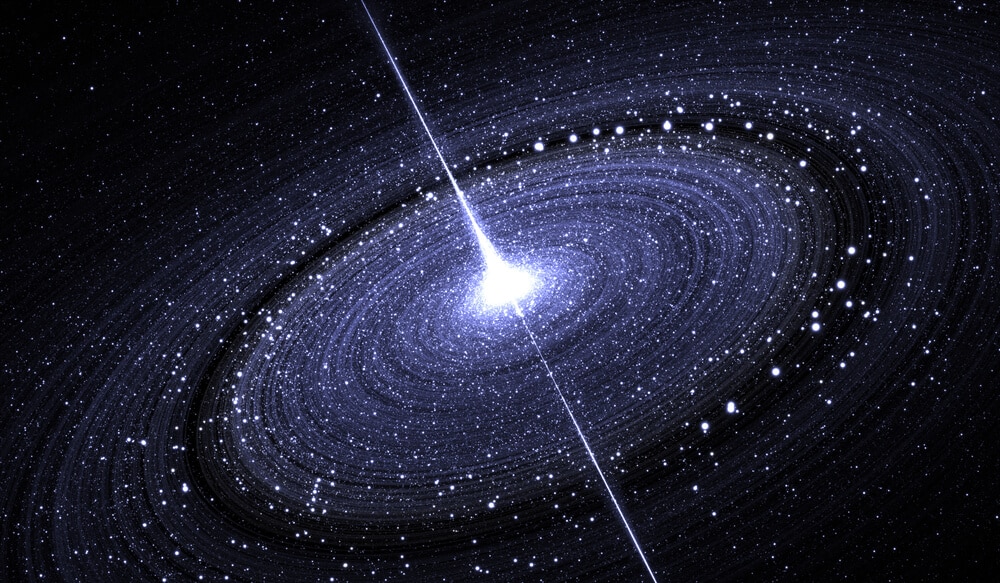Researchers from the Hebrew University and France discovered that below the critical size there are factors that prevent black holes from swallowing gas and growing, in galaxies with a mass of more than ten million suns, the attraction is large enough to pull more and more material from the galaxy to the black hole at its center

Recent astronomical observations have revealed powerful radiation and a massive wind of gas, emitted from the surroundings of supermassive black holes with a mass of more than a million solar masses. These black holes reside at the centers of galaxies, which are the basic colonies of stars in the universe. The discovery of the black hole at the center of our galaxy, the Milky Way, led to a Nobel Prize this year, accelerating the fascinating study of black hole formation. From the new observations it turned out that the emission is especially powerful in galaxies that are more massive than a critical mass - the mass of about ten billion stars like our Sun. These are galaxies slightly larger than the Milky Way galaxy. The big questions facing researchers are what prevents the environment of black holes from emitting radiation and ejecting gas with great intensity in galaxies that are smaller than the critical mass, why the emission becomes powerful in galaxies that are larger than the critical mass, and what is the source of that critical mass.

Astrophysicists from the Rakeh Institute of Physics at the Hebrew University offer a solution to these fascinating puzzles in an article published in the journal of the Royal Astronomical Society, Monthly Notices of the Royal Astronomical Society. The research was carried out by PhD student Sharon Lapiner, under the guidance of Prof. Avishai Dekel from the Rakah Institute of Physics, and in collaboration with Dr. Yohan Dubois from the Institute for Astrophysics in Paris. They analyzed advanced computer simulations of the evolution of galaxies in the expanding universe from the Big Bang to the present day, in order to reach the solution of the questions. The accepted assumption is that in the centers of galaxies, the giant black holes are formed and grow due to the fall of material (mainly hydrogen gas) from the galaxy into the black hole, under the influence of gravity. When the matter is falling at a fast rate, the black hole grows rapidly, and the radiation and wind thrown from its surroundings are powerful. In the vicinity of the black hole so compressed, the gravitational energy is very large, and in the presence of gas falling at a fast rate, this gravitational energy is a source of more powerful radiation and wind than any other source, and which we see from great distances in the universe.
Lapiner, Deckel and Dubois found through the cosmological simulations that in galaxies smaller than the critical mass, the fall of matter into the black hole is slowed down by winds from supernova explosions of large stars nearing their death, thus preventing the growth of the black hole. They also discovered that the braking ceases to be effective in galaxies that are larger than the critical mass, where the force of gravity that drives the fall is stronger, and as a result the material falling in becomes possible and then the growth of the black hole is possible. Prof. Dekel calls the critical mass the "golden mass", and it is responsible for many differences between the properties of the smaller and larger galaxies.

"The important discovery in the new article is that the initiation of the rapid growth process of the black hole, when the galaxy grows above the critical mass, is caused in many cases by collisions between galaxies, during which a lot of gas is compressed into the center of the galaxy and into the black hole," says Prof. Dekel. He adds and points out that this dramatic compression process, which he calls "wet compaction" because it is rich in gas, occurs during the early history of most galaxies, about 10 billion years ago, when matter grew beyond the gold mass. This is a process that is responsible for their main features, such as size, structure and composition. Now it turns out that the wet compression is also responsible for the rapid growth of the giant black holes in the centers of galaxies.

One response
When will they be able to produce cameras that can go into black holes to record what's inside?